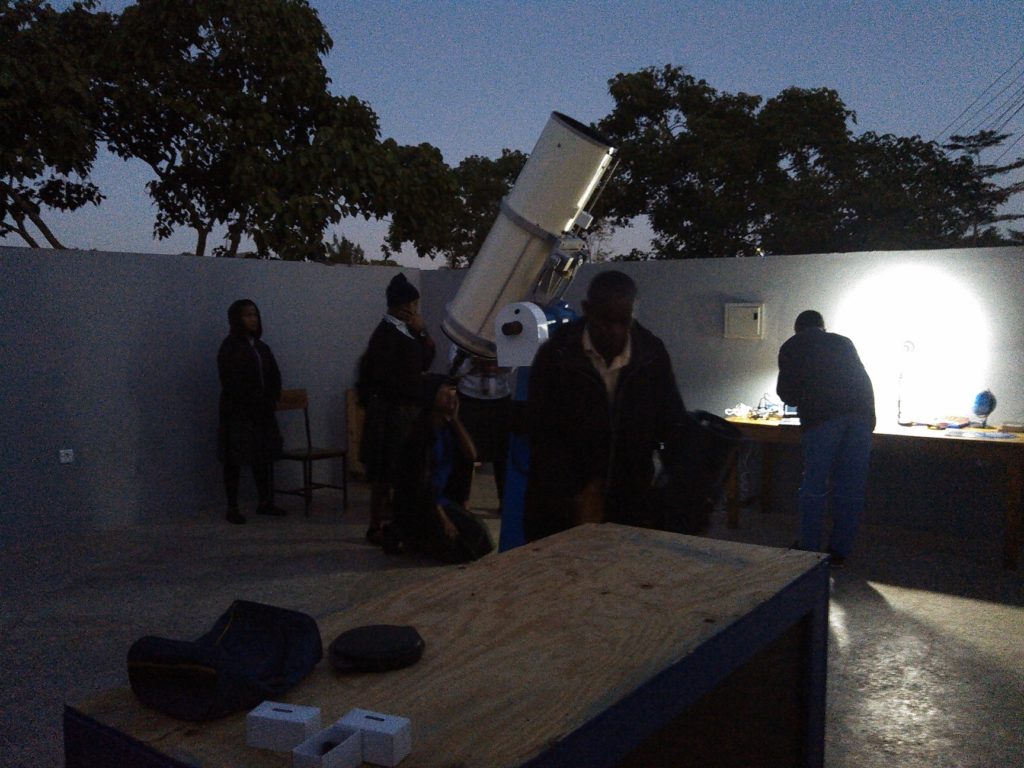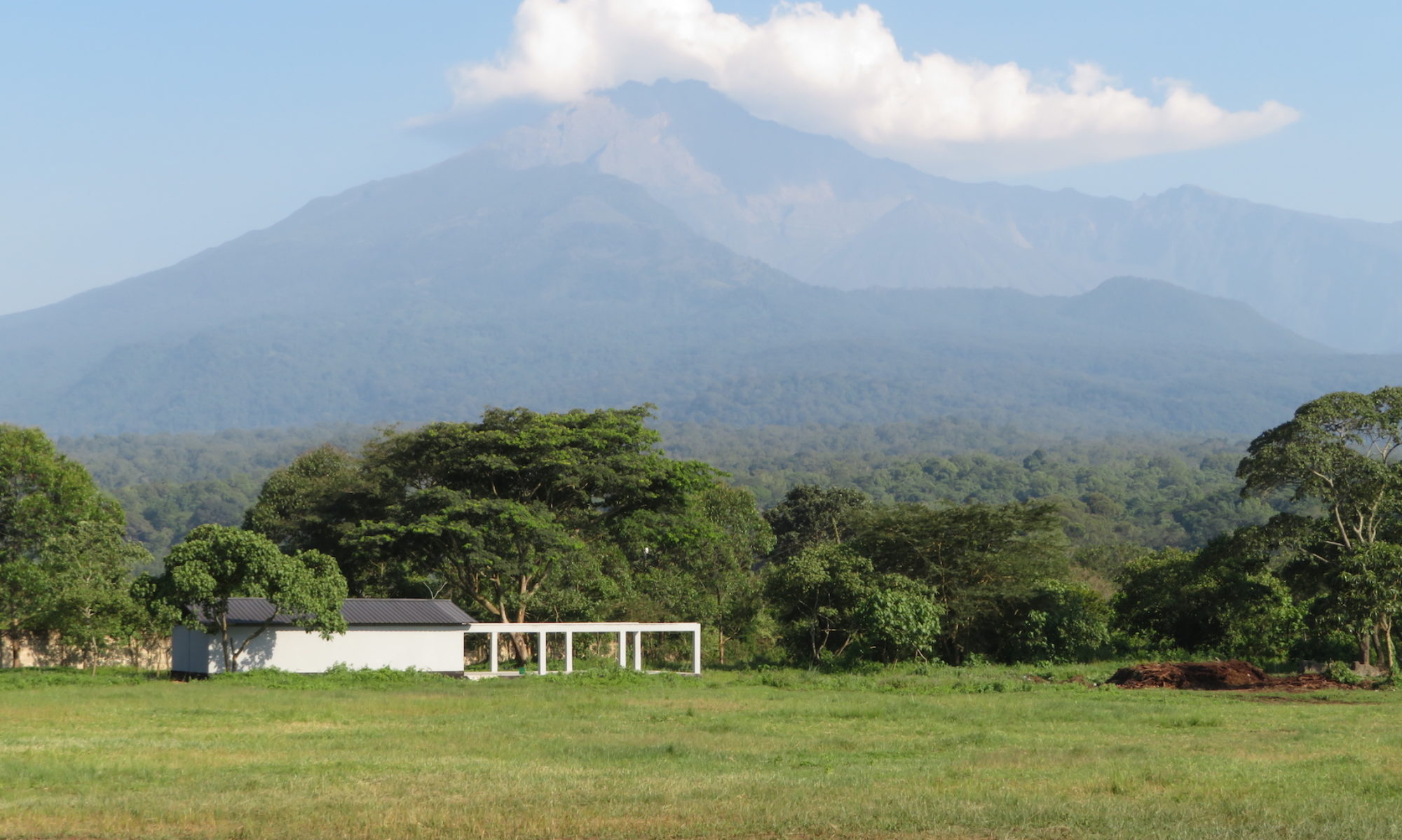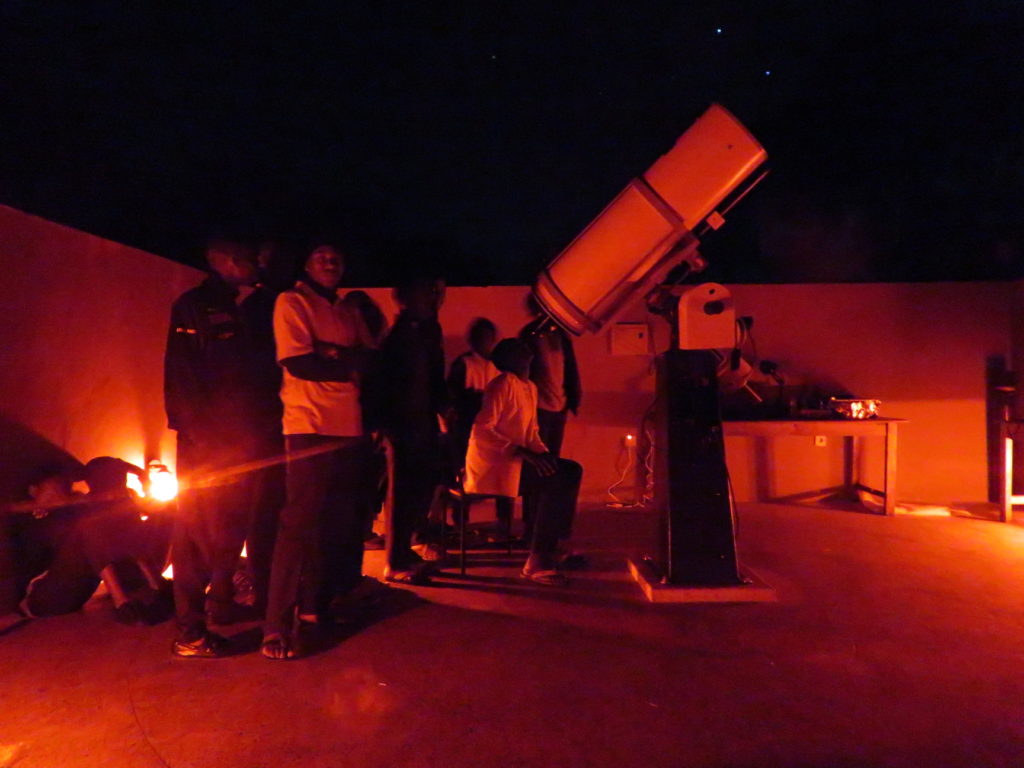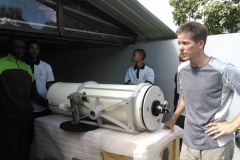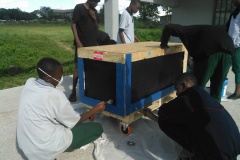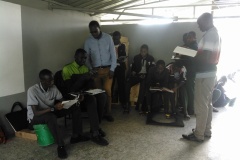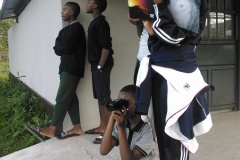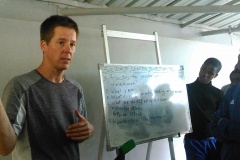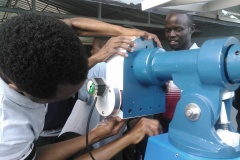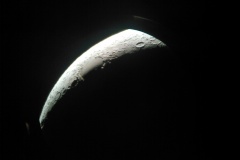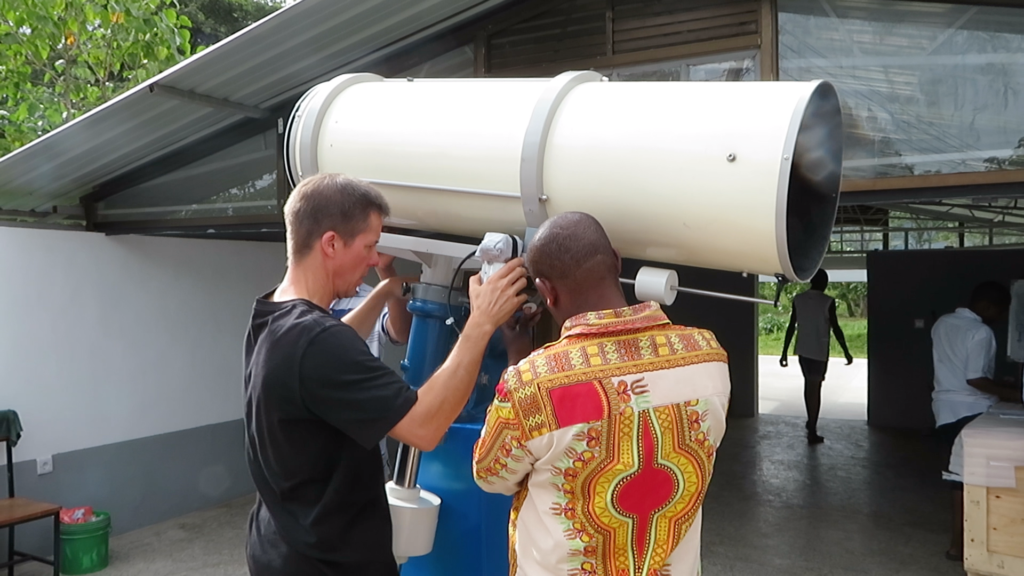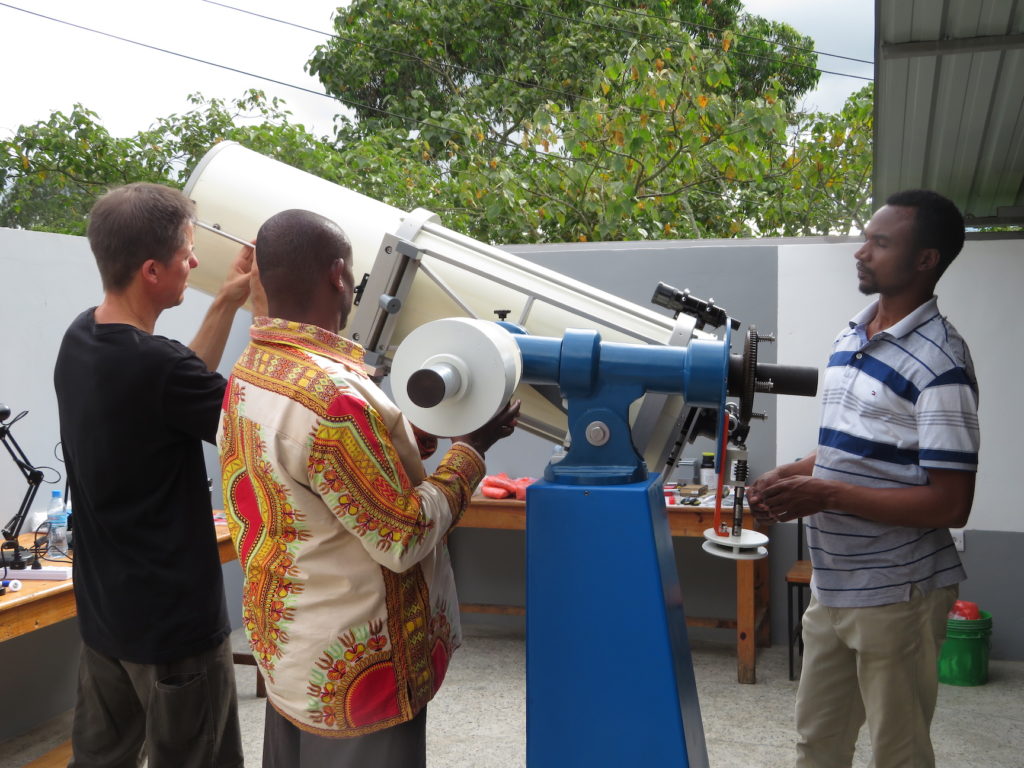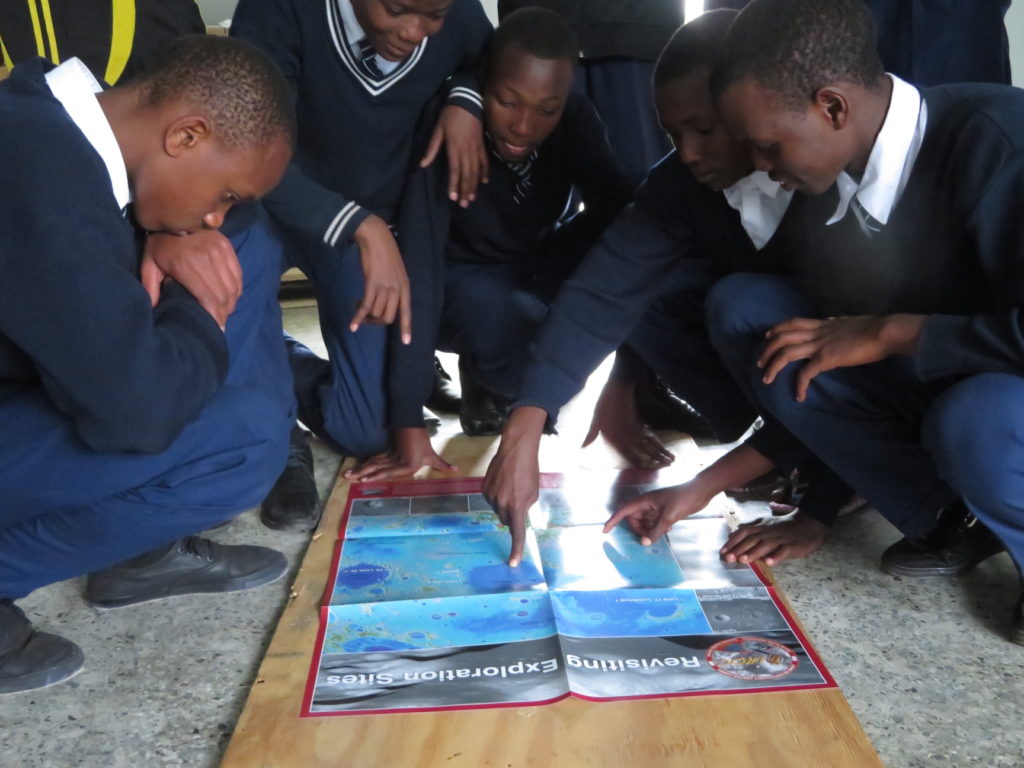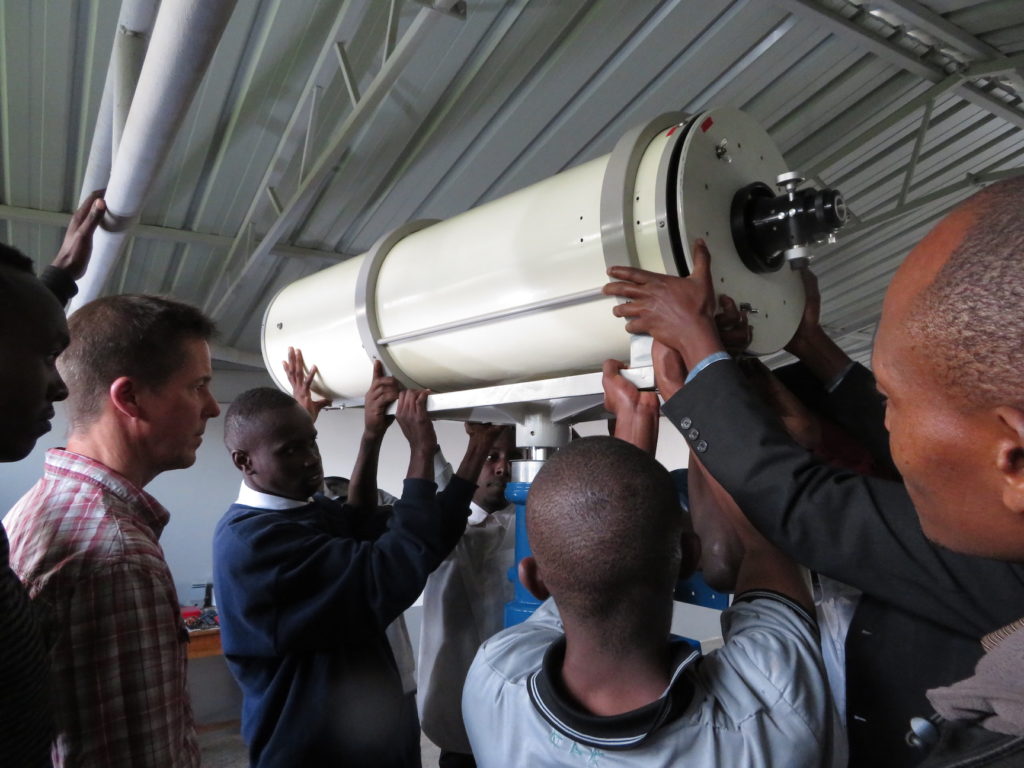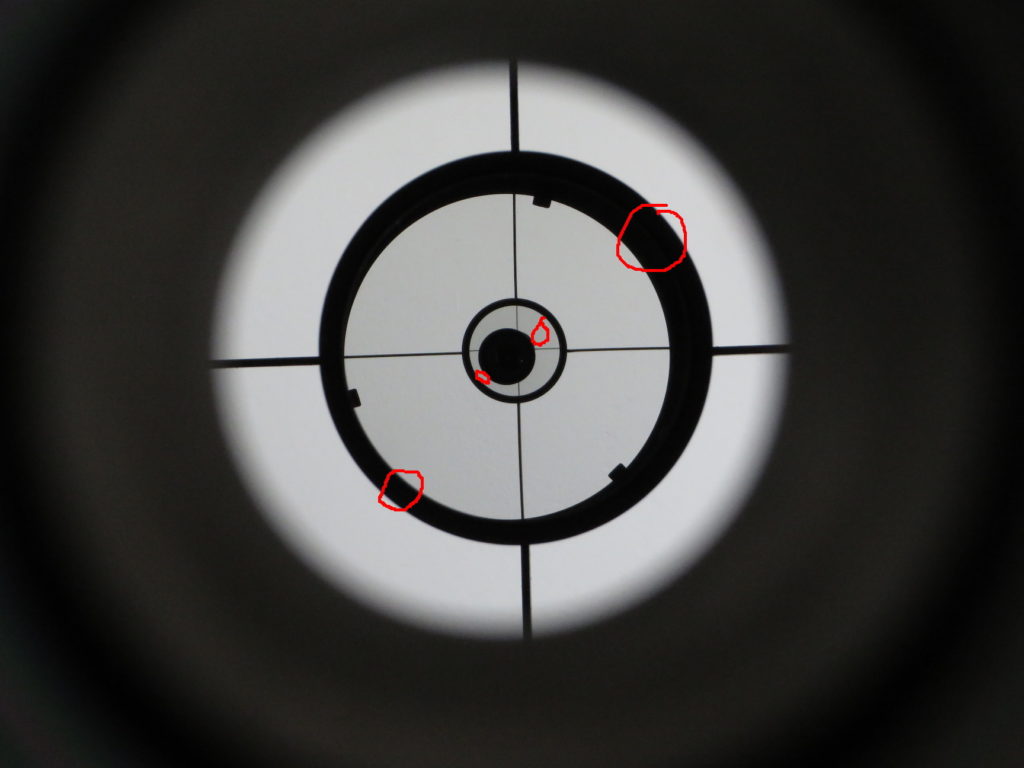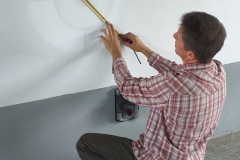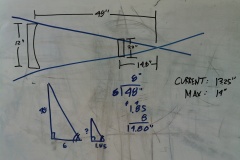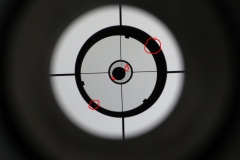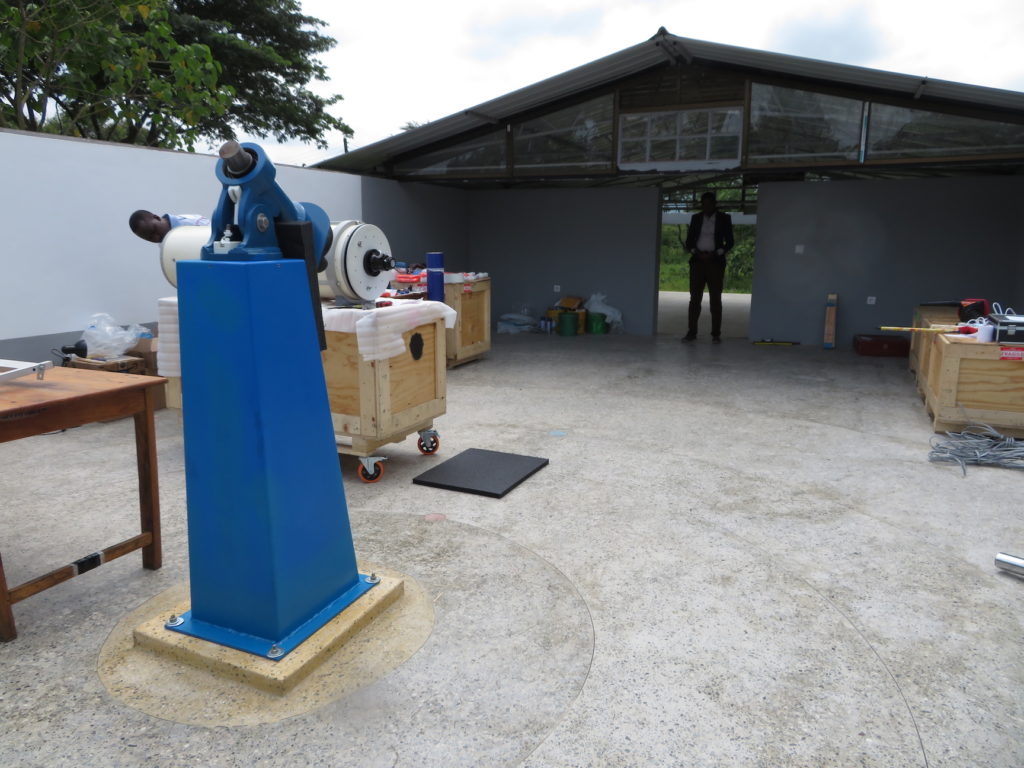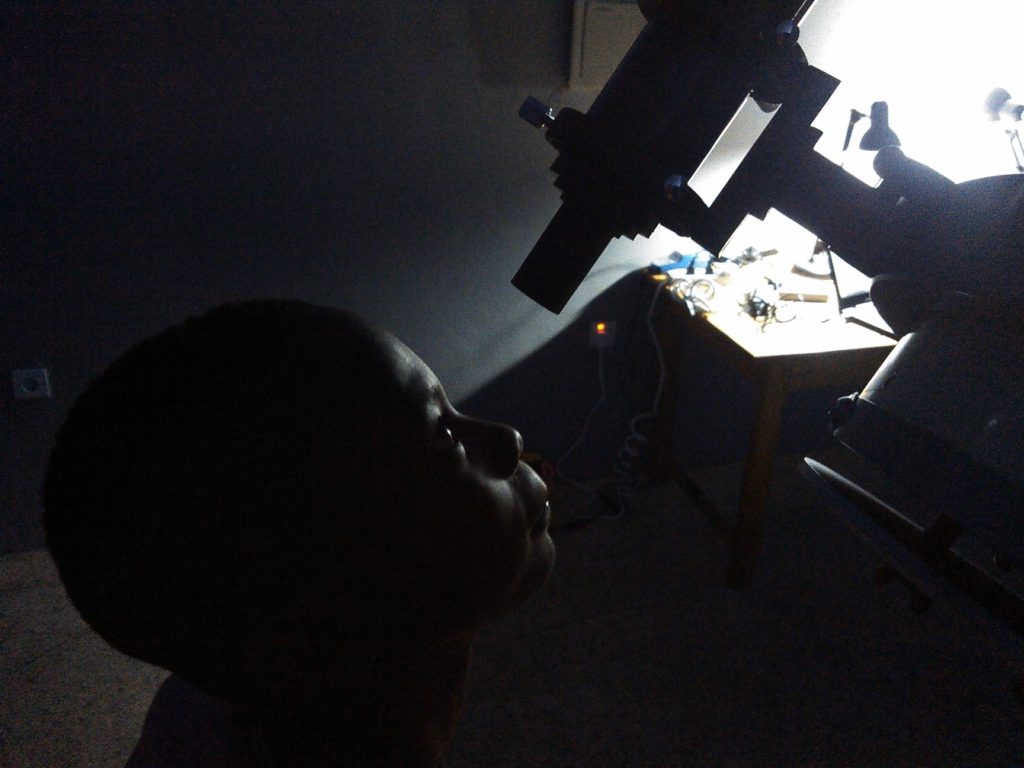
Last night we engaged our second observing session at the Mt. Meru Astronomical Observatory, from 7-10 pm. Again, we enjoyed a full house, with what was easily 60 or more students. This time both boys and girls from the Ailanga secondary school (and the boys were clearly more well behaved 🙂
We introduced three additional telescopes, two mounted on a table, one on a tripod. With these, the students engaged in their own exploration of the night sky overhead.
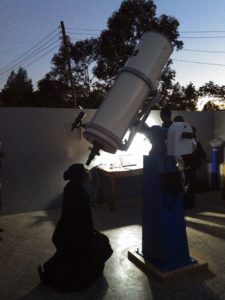 First, we observed the Moon as we had Saturday night. After everyone had a turn, we stopped to discuss what we saw, what we know about the regolith, gravity, cratering on the near and far sides, and presence of frozen water at the poles.
First, we observed the Moon as we had Saturday night. After everyone had a turn, we stopped to discuss what we saw, what we know about the regolith, gravity, cratering on the near and far sides, and presence of frozen water at the poles.
I then asked for volunteers who wanted to point the 12″ telescope at Jupiter. But before this, we discussed why the planets all lie on the plane of the ecliptic, and how that drastically narrows the area of the sky in which to search for them. Without using a sky map, the students surveyed the sky with their eyes and selected just one object before they found Jupiter.
Two of the students then guided the 12″ for the first time, using the tube, spotting scope, and ultimately the eyepiece to learn if their selection was indeed the famous, stormy planet. Finally, we observed Saturn with its glorious rings. And it put on a beautiful show for us this evening. The students commented, “It looks just like the photos in the books!”
In addition, we used out CCD camera for the first time. It worked! but needs some fine-tuning of color, contrast, and focus before the images are worth publishing.
